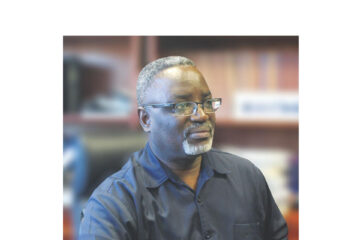Niël Terblanché
The United States Embassy in Namibia handed over a state-of-the-art mobile Intensive Care Unit (ICU) destined to enhance Namibia’s healthcare infrastructure to the Walvis Bay district hospital.
The mobile ICU, valued at N$20 million, was funded by the United States Department of Defence’s Overseas Humanitarian Disaster and Civic Aid Program (OHDACA).
The five-bed unit is designed to enhance the MoHSS’s ability to respond to medical crises not only within Walvis Bay but also in other locations as needed.
The ICU is equipped with dual generator power, water and sewage systems, and air conditioning, allowing it to operate autonomously in the field.
It also includes N$600 000 worth of emergency medicine, ensuring it is ready for immediate use.
To ensure effective use of the facility, a team of Namibian doctors and nurses has received training in setting up and operating the ICU.
The handover was done by the acting deputy chief of mission, Tiffany Miller and the executive director of the Ministry of Health and Social Services (MoHSS), Ben Nangombe.
In her remarks, Miller emphasised the importance of this partnership in enhancing Namibia’s health security and enabling the country to respond to future pandemics, health emergencies, and natural disasters.
“The U.S. government is proud to donate this state-of-the-art mobile Intensive Care Unit, funded through the OHDACA program. This ICU provides the MoHSS with a critical resource that can support local populations and be deployed to remote locations in times of crisis,” Miller said.
Miller indicated that the new ICU is the largest OHDACA donation to Namibia since the country’s independence.
Nangombe expressed gratitude on behalf of the government and the people of Walvis Bay.
He stressed the importance of such facilities in strengthening the nation’s healthcare system, particularly in enhancing ICU infrastructure, training healthcare professionals, and supporting medical interns.
“This donation comes at a crucial time as we enhance capacity at public health facilities nationwide. The ICU will enhance our response to current health challenges and serve as a vital resource for medical emergencies,” Nangombe said.
He added that the ICU will reduce the need for patient referrals to Windhoek, providing timely and advanced care locally.
The donation is part of a larger package worth over N$130 million, which also includes two field hospitals in Outapi and Katima Mulilo and a second five-bed ICU in Otjiwarongo.
These additional facilities will include a 30-bed negative pressure isolation facility and a UN Level One urgent care clinic.
Nangombe added that ongoing projects, such as the construction of a neonatal unit at Swakopmund District Hospital, underscore the Ministry’s resolve to ensure equitable service delivery throughout the country.
He added that strengthening district hospitals will lessen the load on referral hospitals in the capital city, improving patient outcomes and boosting the system’s overall resilience.
According to Nangombe, the mobile ICU symbolises hope, resilience, and the strength of international cooperation.
“I urge all Namibians to support our healthcare workers by adhering to public health guidelines and remaining vigilant against the threats posed by infectious and non-communicable diseases. Together, we can build a healthier, safer, and more resilient Namibia,” Nangombe said.




